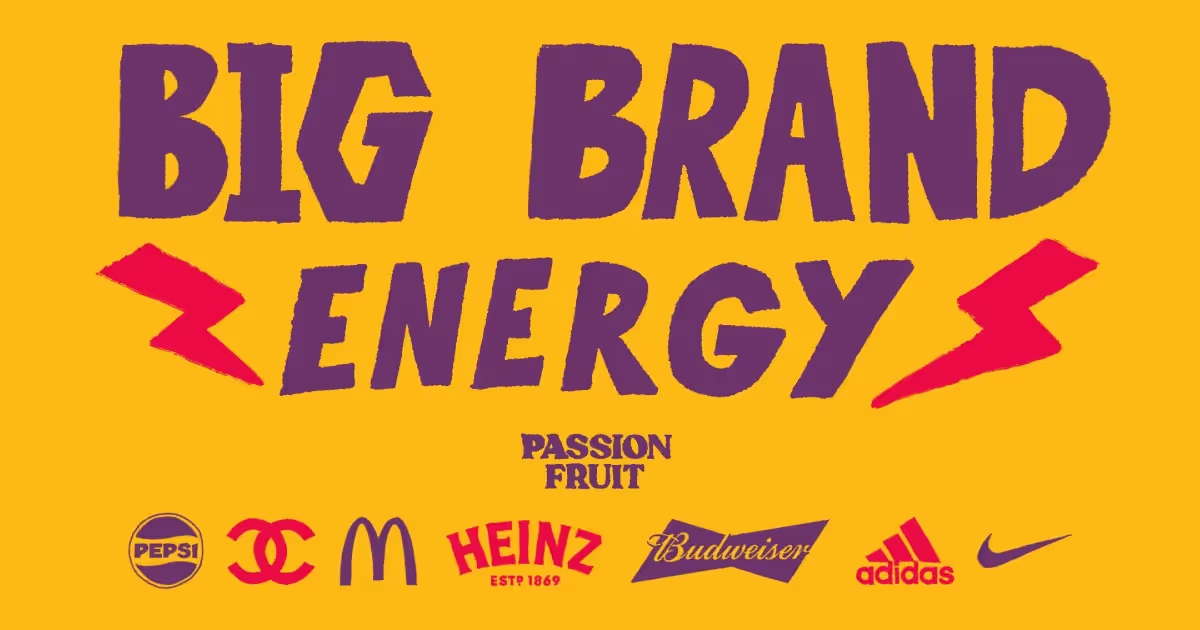Introduction
Once you’ve taken the leap to start your own company the next thing you need to think about is your branding. While it is tempting to go all out and create a jaw-dropping brand that sets your business apart from competitors. I’m guessing you’re not in a position to bring this vision to life? We get it, it’s frustrating. You’re doing something great and you want to look good doing it.
We’re here to tell you a good brand doesn’t require copious amounts of investment. Instead it requires anchoring the look and feel of your brand in your core business strategy. Keep reading for more information about how branding can support your business hit the ground running as well as tips on how to create a standout challenger brand.
What exactly is branding?

Branding is a marketing strategy that involves giving meaning to your business, product or service by creating a recognisable visual identity (e.g. logo, name etc.) and tone of voice. Done right it allows consumers to quickly and easily distinguish your business from its competitors and more successful brands, ensuring it is front of mind at all times. Put simply, your brand should embody your core values, ensuring all new, existing and potential customers perceive you in the right way.
“Your brand is what other people say about you when you’re not in the room.” — Jeff Bezos, Founder and CEO of Amazon
Why is Branding so Important for Startups?

Business owners who choose to follow this path often create a brand that centres around the basics (a logo, font and colour) without giving any thought to their branding strategy. The result? A brand identity that does not stand the test of time. You can’t market a product or a service if you don’t have a brand that explains your business's mission or product or service. Startups by their very nature are unique so it is important you create a brand that represents this.
“Creating a brand without a clear and authentic purpose means failing to create a brand that will connect with consumers and attract investment.” — Raffi Salama, Co-Founder of Passionfruit
To add to this a strong brand helps to ensure investors have a clear understanding of your business and more importantly, what makes it different from other products or services already on the market. It also helps internally by unifying your business goals and giving employees a sense of focus.
1. Find Your Purpose
If you want to create a strong brand identity that resonates with consumers it is important you think about how your product or service can help consumers achieve their goals. Afterall, every great brand has a purpose.
One way to find your purpose is to conduct customer interviews as they allow you to build a clear understanding of what motivates current and potential consumers. Think about it, consumer behaviour is driven by cultural, social, personal and psychological factors. Identifying these influences early can help you establish a strong brand identity that resonates with your target consumer from the get-go.
The key to nailing it? Listen to what is being said and use it to determine how you talk about your brand and effectively communicate your brand promise. Just remember whatever it is, make sure it is what you are known for it. For tips and tricks on how to make customer interviews work for you give our post on ‘why customer interviews are key to supporting growth’ a read.
“Customer interviews work by forcing you to think more about the emotional connections that influence consumer behaviour and less about the functional differences between your brand and its competitors.” — Hannah Jackson, Passionfruit Specialist
2. Find Your Personality

Just like your purpose, your tone of voice (i.e. your verbal persona and attitude) should be unique to you. Finding the right tone of voice enables you to bring your brand to life, connect with your target audience and express your brand values - all while setting you apart from competitors.
Voice: a company’s overall personality (e.g. playful, professional, conversational etc.)
Tone: how a company’s personality adapts to specific situations or audiences (e.g. emotion, inflection etc.)
The best way to determine your tone of voice is to write down all of the words that embody your brand mission. Once you have created a list of words you are happy with, pick three to four words that stand out to you. From here you can begin to scope your brand’s tone of voice and establish its unique personality. Just remember, a poorly informed tone of voice will impact your ability to build sustainable relationships with your target market. Afterall, consumers want to invest in a brand they feel understands them (i.e. one that talks to them, not at them).
One very important thing to remember is that your tone should change depending on who you are talking to while your voice should always stay the same. For example, your tone will vary depending on whether you're talking to loyal customers or employees without impacting your voice.
3. Name
Just like your purpose, your brand name must represent your brand. While some entrepreneurs can land on a name quickly due to their unique proposition, some startup founders need to dedicate more time to find the right name for their business. Whatever the position you find yourself in, don't rush this process.
Rushing to find a brand name could mean you choose one that doesn’t fully encompass your brand's proposition, causing you more work as your scale. Something future you, definitely won’t thank you for.
Once you choose a name for your brand, check its suitability. Even the big guns get it wrong sometimes. In 2013 Ernst & Young re-branded to ‘EY’ in a bid to simplify their name and logo without checking to see if there were any other brands operating under the same name. Unfortunately for them, there was meaning they had to spend twice as much correcting the mistake. So while it is important to always do your research it is equally as important you choose a brand name that doesn’t require any explanation - it should make sense from the offset.
4. Create Brand Guidelines
Once you’ve nailed your purpose and your tone of voice, it’s time to think about your brand guidelines - the rules that shape your brand’s identity. Your brand guidelines influence your visual style including everything from the imagery you use, to the icons on your blog posts, to your packaging designs.
A good design requires creating a brand rooted in your core business strategy. That means designing a brand that encompasses your core message, your target customer, your product, and what makes it unique — all while standing out from the competition. Getting this right requires you to have a deep understanding of what your business stands for.
If you don’t take time creating your brand guidelines you won’t have the right tools in place to guide your brand efforts across the different marketing channels you want to leverage. Brand guidelines are key to ensuring consistency in your storytelling. What is more costly? Losing customers because your brand is inconsistent, or creating detailed brand guidelines to ensure you create a loyal and trustworthy story through your brand?
Your brand guidelines should include all the nitty gritty information relating to your brand identity as outlined below:
- Colour palette
- Font
- Graphics
- Image guidelines to support photography and videography
- Tone of voice
- Logo
- Colour scheme
Once you have taken the time to create a comprehensive guide, make sure you remember to use it. You’d be amazed at how many first-time founders forget to use their style guide as their company starts to grow. Just because you’re growing doesn’t mean you should stop telling your story coherently - every decision which relates to your brand should marry up with the brand guidelines you took time to pull together. You don’t want to end up with a muddled design or a brand that doesn’t quite work long-term as it doesn't reflect your business strategy.
Top tip: It is a good idea to conduct a brand audit every six to twelve months as it helps you to keep track of how your brand is perceived by your customers and how clearly it demonstrates your purpose.
5. Logo

Once you have an understanding of your purpose and personality you will also be able to create a brand logo that accurately encapsulates what your brand stands for.
If you don’t have the graphic design skills to create a showstopping logo, hire an expert. Given your logo is going to be used on a daily basis on all of your marketing materials from your website to your advertising and business cards it’s worth finding the right person to bring it to life. If you’re not sure where to start, why not take a look at Passionfruit. It is a great option for anyone looking to find talented graphic designers ready to create a memorable brand logo.
While the aim is to create a recognisable logo it doesn’t always require the support of a standout design consultant. A lot of brands we know and love choose to use wordmarks in place of logos as it is cheaper while still allowing your brand to appear modern and professional.
6. Maximise Your Visibility
Once you have your brand guidelines in place it is time to think about how to tell your story to maximise the visibility of your product or service. The first and arguably most important place to start is with an informative website - how else will your target audience, investors and potential employees learn more about who you are or what you do?
Passionfruit Insight: Millennials more than twice as likely to use online sources to learn and become aware of brands compared to boomers. An additional 51% of millennials agree that digital purchasing channels should lead to more personalised solutions, compared to 33% of boomers.
When it comes to designing your website, make sure you think about the customer experience from start to finish, ensuring your purpose and product is communicated at every stage. Your style guide will be key to helping you achieve this. Once you have nailed your web design you can look to expand your proposition to attract new consumers by leveraging other marketing channels like social media to tell your brand story and engage with your target audience.
7. Social Media
More and more consumers are turning to social media to research new brands, learn more about brands and find out what people really think of them. To help you get started here are some top tips from our experts on how to make your brand a success on social media:
- Identify your core audience and promote your brand on the social media platforms they love. Even if you’re a B2B Saas brand there are ways you can target consumers on platforms like Tiktok. Don’t believe us? We’ll prove it.
- Verify your account on Twitter, Facebook, Instagram, or YouTube. That little blue tick goes a long way to helping reinforce the trustworthiness of your brand.
- Engage with consumers by liking and replying to comments and sharing user generated content (consumers love social proof).
Conclusion
Creating a sustainable brand should always begin with your customers before evolving into clear verbal and visual guidelines. Taking time to carefully curate these brand guidelines will help to ensure your brand identity remains consistent across your marketing efforts, establishing your brand as trustworthy.







